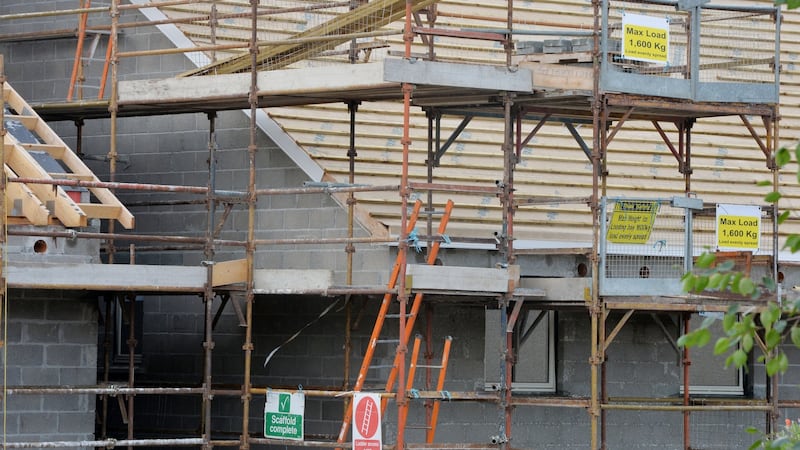Trinity College Dublin’s billion-euro idea for an Innovation District in the Grand Canal area of Dublin is the stuff political and corporate dreams are made of. It combines lofty plans, private funding, development, the tech sector, comparisons to fancy cities such as Boston and Toronto, the seductive potential of more foreign direct investment, and government involvement for politicians scrambling to claim credit for Ireland’s ongoing (yet curiously absent in many people’s lives) economic miracle.
The Taoiseach, who referred to the area as “Silicon Docks” said: “We have to ask ourselves, how can we market Ireland and Dublin as the ideal location for the next wave of investment?”
Marketing Ireland and positioning Dublin as a location for investment is how Fine Gael views the nation and its capital through its augmented reality lens where everyone rejoices in the goofy neoliberal utopia of co-living and co-working spaces, alongside impossibly expensive flashy rebranded bedsits paid for by the parents of wealthy – and many visiting – students.
Perhaps these Innovation District plans will expand Grand Canal Dock's point of view beyond tech evangelism, stuff that looks good on drone videos
Why anyone would want to emulate the neo-feudal social structures of Silicon Valley and nearby San Francisco (“How Silicon Valley fuels an informal caste system,” a recent headline in Wired ran) is beyond me, especially considering that San Francisco is in the middle of a housing crisis so epic there are pretty much weekly articles detailing the craziest aspects of it: average one-bedroom apartment rent $3,590. The 22 bus that runs in Palo Alto has earned the nickname “Hotel 22” because so many homeless people use it as an unofficial shelter. Mmm, innovation! Way to disrupt that key intersection between housing and mass transit, you guys!
Magic tax laws
An Innovation District is actually a good idea. Embedding a university amongst the multi-billion-dollar tech companies shading the startups in the area makes sense. Politicians, tech folks, and university people are constantly at pains to repeat that it’s not just our magic tax laws which make everyone so much money that attracts people to Ireland – don’t be silly! – it’s “talent”. And universities are where “talent” comes from.

This latest plan also signals the ultimate purpose of the Grand Canal Dock area, which is to solely focus on an industry – tech – that is notoriously unstable. Once upon a time there were plans for the area to be a real neighbourhood, not the parallel universe that it is, operating at arms length from the rest of the city.
Perhaps these Innovation District plans will expand Grand Canal Dock’s point of view beyond tech evangelism, stuff that looks good on drone videos, and psychological tricks to make people stay in their offices until all hours. That would be good.
One of the things that the area has been bleeding in recent years is exciting culture. The Factory acting studio was moved out as Boland’s Mill was set to be developed. The excellent cultural hub Mabos had its warehouse redeveloped as Airbnb’s office. The Lir Academy is there, which is great, and the Grand Canal Theatre sponsored by a gas company too. But the edge and the potential for an edge has long been smoothed away.
We can only dream of what those massive silos that were part of the Boland’s Mill complex could have housed before they were demolished to be turned into another wall of glass. Try not to think about their potential the next time you’re in the Turbine Hall at Tate Modern. We get “offices” and “retail” and “units” in Dublin, not ideas.
One Innovation District Trinity is looking to emulate is Kendall Square in Cambridge, Massachusetts, often cited as the most innovative neighbourhood in the world thanks to the combination of academic organisations and MIT affiliates and tech companies (Amazon, Apple, Google, Facebook, etc.)
City of arts
All is not well, however, in Cambridge. There's an interesting in article Cambridge Day from August 30th, 2017. It's about the Cambridge housing crisis, which says between 2012 and 2017 housing prices in the area nearly doubled.
I don't hear much talk about housing in this Innovation District. Where are all of these innovators going to live?
“Historically Cambridge has been a city of arts, scholarship, entrepreneurship, music and innovation,” the article reads. “It has been a diverse city – a sanctuary for immigrants and refugees from all over the world. It has a delightful mix of people of all races, nationalities, stages of life and levels of education. It is similar to Manhattan in its heyday. What happened to Manhattan? Housing prices limited new residents to lawyers, executives, bankers and old money… Once the arts scene is gone scholars move to the suburbs and engineers can no longer afford to take a few months off from work to bootstrap new ventures, Cambridge will reach a tipping point of a major demographic shift. The excitement and intellectual energy will be gone.”
Sound familiar?
I don’t hear much talk about housing in this Innovation District. Where are all of these innovators going to live?

Do you know what would make Dublin truly innovative? Creative? Marketable? Attractive? Cutting edge? Sustainable? World class? Building affordable housing.
Let people who are from the city, want to live in the city, make the city, create in the city, contribute to the city, exist in it. People who don’t have tech company salaries. Immigrants. Student. Artists.
The cultural fabric of the city and the people who create that fabric, which is what makes Dublin special, is being dismantled because of the housing crisis. Innovate that.









